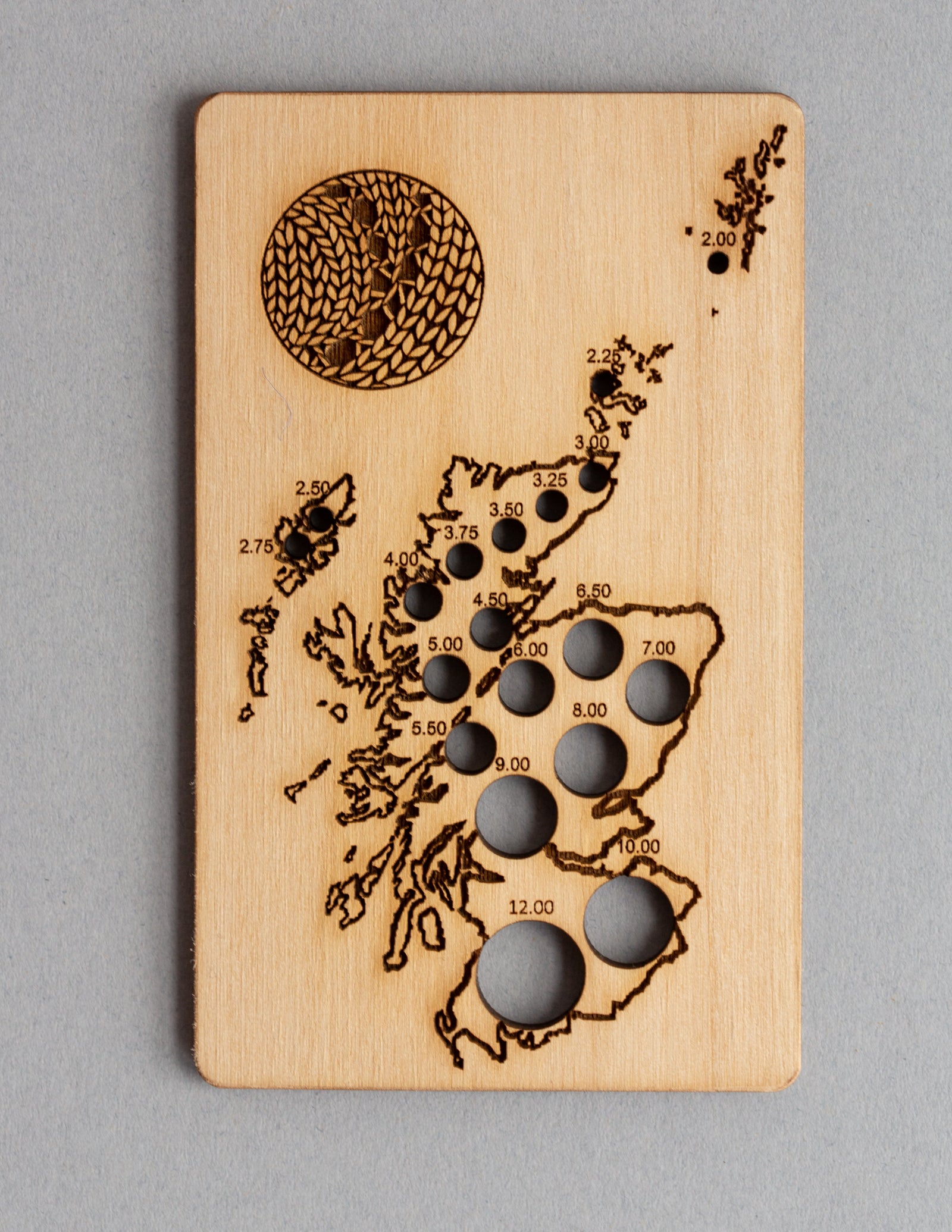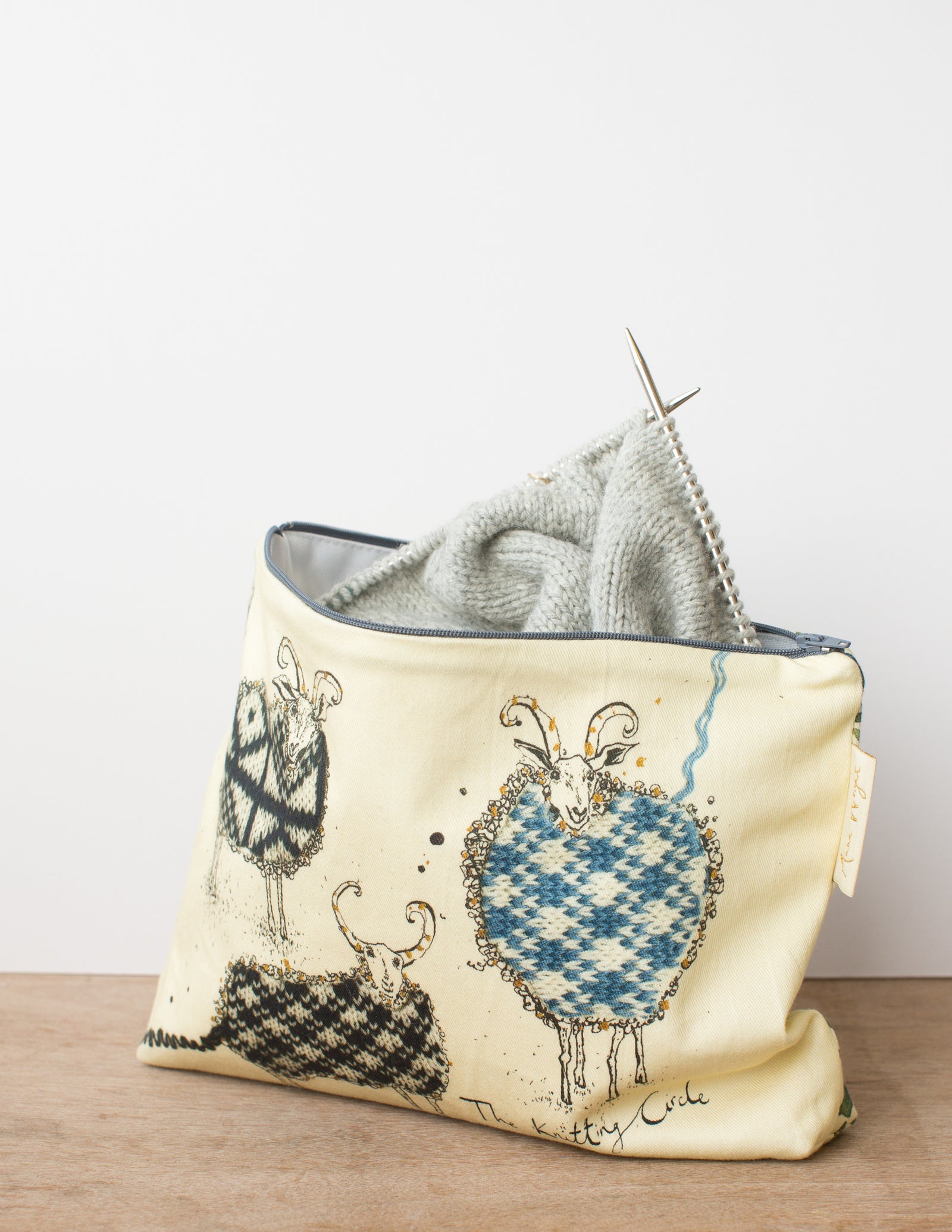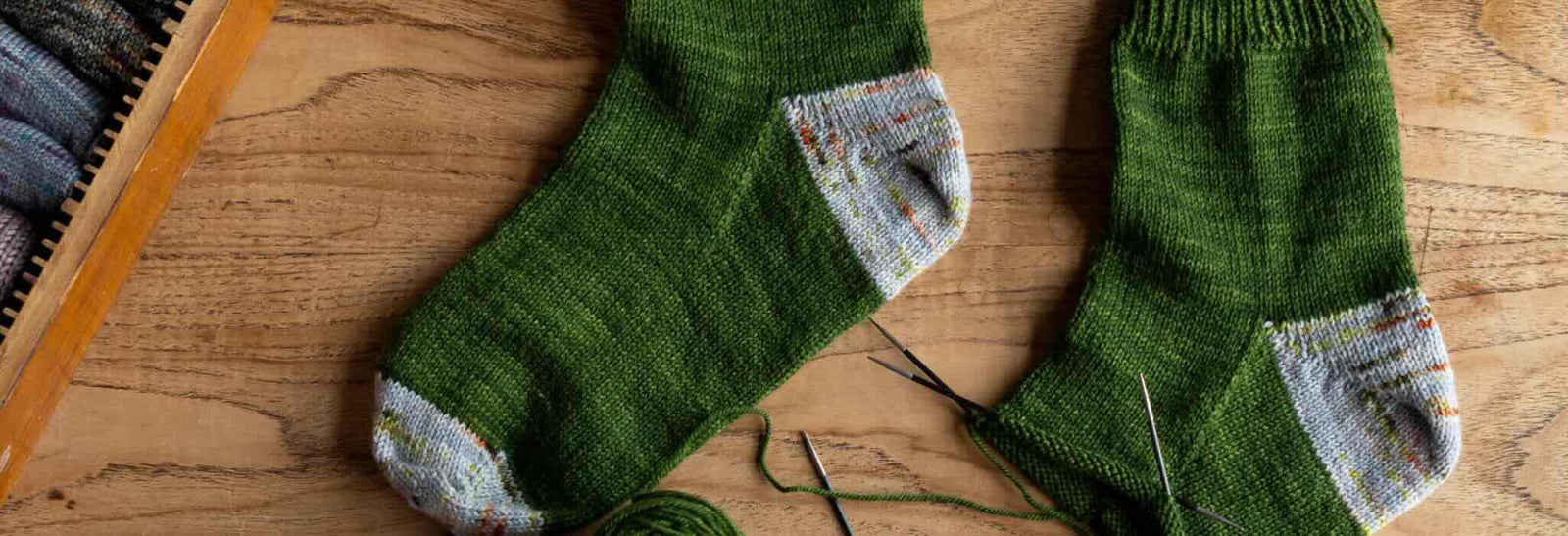Patterns
Kits
sundries
knitting tools, buttons and notions, project bags and other pleasing little things
knitting tools, buttons and notions, project bags and other pleasing little things

Exclusive Scotland needle gauge by Katrinkles

Zippered pouches in two sizes by our studio neighbour Anna Wright

keep small tools accessible with the Maker's Keep
gift 2019
Subscribe to our Colourwork Club for a gift that lasts well into the new year. Your recipient will receive a new colourwork kit in Janurary, February and March

Subscribe to our Colourwork Club for a gift that lasts well into the new year. Your recipient will receive a new colourwork kit in Janurary, February and March


Last minute shopping? Gift cards are delivered electronically - forward the email or print it for your recipient. A range of amounts are available and gift cards don't expire.


An Open Letter to White Makers & Designers Who are Inspired by the Kimono and Japanese Culture
June 11, 2019
Introducing the first in an ongoing series of guest posts. I'm honoured that we're beginning with this vital letter from Emi Ito.
I first met Emi through her instagram @littlekotoscloset, where she shares thoughtful and honest reflections on her own identity, her work as a mother and a public school teacher, and vocally supports all marginalised people. Emi has been outspoken about the cultural appropriation of the kimono in fashion and has helped many makers and designers find a less hurtful approach to naming their patterns and products. She founded and co-moderates the Instagram page, @buyfrombipoc, which celebrates Black, Indigenous, and other people of color who are makers and innovators in the sustainable, slow, and ethical fashion communities. Emi is the great granddaughter of a tea master, the granddaughter of a calligrapher, the daughter of a koto and shamisen player and has a deep personal and cultural connection to kimono. —Ysolda
My Japanese mother died when I was eight and I knew from the time I was a child that I would wear one of her kimonos to my wedding in her honor so that she could walk with me down the aisle. My aunt taught me how to dress in kimono on my own, but for my big day she flew to San Francisco to celebrate with me and to dress me with her hands. She wrapped me in my mother’s red and white shibori kimono with green bamboo at the hem, and cinched the silver obi around my waist. I could feel my matrilineal line holding me, whispering encouragement to me as I stepped into the next phase of my life.

Emi Ito's aunt dressing her in kimono for her wedding. Photo by Nirav Patel.

Emi's mother and grandmother in kimono and haori.
My kimono is my sacred connection to my mother and my female ancestors. I wear kimono to mark the most special moments in my life and to celebrate my heritage; a heritage that has been derided and marginalized even within my own interracial family. In this year, 2019, I have been told to go back to Japan and I always monitor where I am and who is around me, before I start speaking Japanese to my child.
You may be feeling defensive or upset that I am addressing you specifically and not all makers, regardless of their race and ethnicity. But there is a reason I am writing to you: You so often hold the power in our world where the violence of colonization is still felt by many and where racial categories such as “white” were created by white people to benefit white people. My writing to you does not mean people of color are exempt from cultural appropriation, it just means it is a separate, nuanced discussion.
My writing to you does not mean you have not suffered or are not suffering. It does not mean you have never experienced injustice. As Munroe Bergdorf said,
White privilege doesn’t mean your life hasn’t been hard; it means that your skin color isn’t one of the things making it harder.
Even as an AIDS orphan who has lived through my fair share of trauma, I, too, have light skin privilege as a person who is Multiracial Japanese and white. My trauma and hardships do not mitigate my light skin privilege. As a white person, you have certain social advantages around the globe because of how concepts of race have been socially constructed to benefit white people.

When I discuss cultural appropriation, I typically start with the three P’s: power, profit, and people. Power first because there is almost always a power dynamic of a more dominant culture taking from another culture that has been historically oppressed and marginalized. Profit because someone is typically profiting in our capitalist society and often it is not the origin cultures and communities. And people because the people of the origin cultures almost always get erased.
Cultural Appropriation: Power
Because white people have systemic power, we have to start with white complicity in cultural appropriation first and foremost.
Cultural appropriation is a type of “veiled racism” i.e. socially acceptable form of perpetuating white supremacy (see below for The Pyramid of White Supremacy). I find the definition of white supremacy offered by the Conscious Kid to be helpful:
White supremacy is a system of structural or societal racism which privileges white people over others, regardless of the presence or the absence of racial hatred. White racial advantages occur at both a collective and an individual level.
Cultural appropriation is a form of white supremacy that perpetuates a colonial legacy because a dominant culture takes from a less dominant culture by cherry picking desirable or profitable aspects of the culture for personal gain, whether it be monetary, social, or both-- while members of the origin culture get marginalized and even discriminated against for the same cultural markers.

In her book, So You Want to Talk About Race, Ijeoma Oluo writes, “Cultural appropriation is the product of a society that prefers its culture cloaked in whiteness. Cultural appropriation is the product of a society that only respects culture cloaked in whiteness… Until we do live in a society that equally respects all cultures, any attempts of the dominant culture to ‘borrow’ from marginalized cultures will run the risk of being exploitative and insulting.”When the kimono I have familial and spiritual ties to, gets “cloaked in whiteness” and is used to name a garment with box sleeves that does not resemble actual kimono sleeves, with a silhouette that is also far removed from the original -- there is not just insult, there is injury.

Cultural Inspiration and Where the Line Is: Profit
If there is an element of profit by a white maker or designer who is inspired by Black, Indigenous, or other people of color (BIPOC) cultures, then there will always be an element of cultural appropriation because the maker who is from a dominant culture is profiting off of a culture that is not their own. Especially as a white maker, you cannot ignore the power dynamic or sweep it aside with declarations of cultural understanding and inspiration. As Oluo also writes:
Appreciation should benefit all cultures involved, and true appreciation does. But appropriation, more often than not, disproportionately benefits the dominant culture that is borrowing from marginalized cultures, and can even harm marginalized cultures.
Cultural Appreciation: People
My mother spent most of her adult life not only performing as a professional koto and shamisen player, but teaching several non-Japanese heritage students classical Japanese music. She believed wholeheartedly in cultural exchange and understanding being bridged through music. Her students were fully committed to learning the art of Japanese classical music, invested in purchasing instruments, practiced daily, and performed as a group on several occasions. She also recorded with jazz great, Pharoah Sanders, which is a point of great pride for my family.
I share this piece of my family legacy because it is what guides my own thinking: Cultural exchange and appreciation at its best, happens when there is a depth of commitment on both sides that is based in a relationship of mutual respect and even love.

If you respect and love Japanese culture then you must also honor the people who create and breathe the life into the culture. And that means all of us: The Japanese heritage people born in Japan and those of us born outside of Japan. You have a responsibility to consider the complex and painful histories of incarceration during WWII of Japanese Americans, Japanese Canadians, and Japanese Peruvians and what heritage garments mean in these communities. You must consider those of us who have been racially targeted and ostracized for being of Japanese heritage, for wearing our cultural garments, bearing our Japanese names, and eating our cultural foods-- you need to honor us as well. Respecting Japanese culture means respecting the contributions, histories, and voices of Japanese heritage people who live all over the world.
How to Appreciate and Not Appropriate: A Few Frequently Asked Questions
1. How do I avoid cultural appropriation of Japanese culture?
- Use terms like duster, robe, cardigan, wrap coat, and drop sleeve top rather than “kimono.” The kimono may not be considered a sacred garment to all Japanese heritage people, but it certainly is to many of us. Do not abuse our sacred, spiritual ties to our garments by appropriating the term.
- Stop using any Japanese names or words to describe garments: Names such as haori jacket, origami pants, sakura sweater, Kyoto coat, wabi sabi collection, and so on. In the words of Japanese potter, Makiko Hastings,
Our cultural words are not your trend.Makiko Hastings
- If you do not have Japanese heritage, do not adopt a Japanese name for your brand, which is representing you as the maker. Borrowing an identity that is not connected to your own heritage is not only cultural appropriation, but disrespects those of us who live as Japanese heritage people day in and day out.
- Listen to the lived experiences of Japanese heritage people who are speaking out about the cultural appropriation of the kimono and Japanese culture. Just because you may have Japanese heritage friends from Japan who think that cultural appropriation is not an important issue, does not mean that is the case for all Japanese heritage people. Japanese heritage people born and raised in Japan as an ethnic majority may not be as tuned-in to the kind of racism that Japanese heritage people outside of Japan contend with; or as aware of the traumatic history of incarceration during WWII experienced by Japanese heritage people in the US, Canada, and Peru. Ties to cultural garments and items will be very different based on these social and historical contexts. Our voices matter and our cultural ties are not less valid just because we may lack Japanese citizenship.
- If your main reason for naming a garment “kimono” is because it is easier for people to find when they search using the tag or word, “kimono,” then that is a clear sign to change the name to “robe” or “drop sleeve or box sleeve.” You are not honoring Japanese culture, but focused on a marketing strategy.
2. Doesn’t Japan appropriate from other cultures?
Yes, it does and that does not make it right to culturally appropriate from Japan. (Please note that Japan does not appropriate from white European countries and cultures. Cultural appropriation is about power and an important piece of Japan’s history is how it was forced to open its doors under threat of violence by the United States, which is a colonial power. Two atomic bombs were also dropped on Hiroshima and Nagasaki, which is the only use of atomic bombs in human history. Over 200,000 mostly civilians were killed. If that isn’t a power dynamic being exercised, I’m not sure what is.)
Japan also has a violent history of colonizing other Asian countries such as Korea and the Philippines, which should not be ignored or forgotten. Cultural appropriation within Japan is a serious issue just as it is a serious issue anywhere. It is important to stop the legacy of colonization by doing our best to interrupt and question cultural appropriation whenever and wherever it appears.
While many people focus on Japan itself, we need to remember that Japanese heritage people live and are born in countries all over the world, so while we may have a connection to Japan in one form or another, our historical and present day contexts span the globe.
3. I’m inspired by Japanese culture and want to acknowledge that inspiration, is it possible to do it respectfully?
Until we co-create a world where there is more equity between cultures, the cleanest answer would be to find another inspiration source that is connected to your own heritage, especially because there are Japanese heritage makers and designers who are innovating the kimono, haori, and other fashion-related art forms.
However, I also believe that there are people who have genuine care and connection to Japan without any Japanese heritage. People who are like some of my mother’s former music students, committed to studying and immersing themselves in a Japanese art form with dedication; people who are investing in building a relationship with a master teacher and learning from the source, whether it be in person or online.
What that would look like in fashion would be white designers and makers who are inspired by Japan, committing to learning from a Japanese heritage cultural garment maker. It would mean learning from kimono and sashiko makers by financially supporting their teachings and building a relationship. True cultural appreciation would also mean not creating Japanese-inspired items to make a profit because if profit is involved, it is cultural appropriation.
4. You asked some slow fashion brands and makers to use “haori” rather than “kimono,” and now you are changing your mind? Why?
For the past year I have asked many slow fashion ethical brands to change their “kimono jackets” or “kimono pattern” to other names such as cardigan, duster, and wrap coat. I believe that part of ethical making means being thoughtful about cultural appropriation. On more than one occasion I also suggested “haori” rather than “kimono jacket/kimono pattern.” While I will not be recommending the term “haori” from here on out, I do not regret making those requests and suggestions. At the time, I felt like it was more respectful toward my culture to name garments slightly more accurately as kimono was extremely inaccurate. Haori do function in the way a jacket or cardigan does, as outerwear over a kimono. I was following the lead of Japanese heritage makers who have started naming jackets inspired by haori, haori jacket Oil + Lumber, Atelier Delphine, and Prospective Flow). But the key element here is that they themselves are Japanese heritage makers and designers celebrating their own heritage.
The non-Japanese heritage makers I have been in touch with who renamed their garments to haori took a significant step in the right direction, which I want to acknowledge. I am grateful to people who are engaged in reflecting deeply on the harm caused by cultural appropriation. We can all continue to listen, learn, and grow.
For the past several months, I have had time to write out my thoughts and engage in discussions with more people since first writing about the cultural appropriation of the kimono, especially my friends Maiko and Makiko. I am very thankful for how they helped to shape my thinking and shared their stories with me. Listening to their lived experiences has been a gift and I am changed because of it.
Cultural Collaboration: An Example and Update
While I believe that the best practice as a maker and designer is to completely avoid cultural inspiration that does not derive from one’s own culture, one experience I had moved closer to cultural collaboration: working with Elizabeth Suzann to name her Asawa Tie Belt after the Japanese American sculptor, Ruth Asawa. We had a personal discussion, my contribution was acknowledged, a connection blossomed, and a Japanese American artist who has made our world more vibrant was honored. So far this is the closest experience I have had with a maker where I have felt the cultural appreciation that Ijeoma Oluo writes about and that my own mother modeled throughout her life.
Does this mean makers and designers should henceforth name their Japanese inspired garments after Japanese heritage people? No, it means this was one instance of an experience that felt like a genuine exchange of ideas.
Update as of April 2021: The Impact of Anti-Asian Violence
After a year of spiked anti-Asian violence across the nation and a mass murder of six Asian women in Atlanta, I spiraled into grief and was revisited by old traumas. Elizabeth Suzann reached out to me and we discussed the Asawa Tie Belt and whether it still felt right to have the piece out in the world. I appreciated her reaching out and sat with her question. My answer was no, no it does not feel right to have a white maker profiting off of an Asian American woman’s legacy and name when we are being attacked and even murdered for being who we are. After sharing my answer with Liz, she decided to phase-out the belt and will redistribute all of the funds from sales of remaining belts to AAPI Women Lead.
Cultural Responsibility: What To Do Moving Forward
White makers and designers, you need to do your own work of anti-racism, which means accepting the fact that not everything is for you. Find inspiration that is rooted within your own hearts and spirits. Being actively anti-racist is a daily living commitment to being in the world to help dismantle the pyramid of white supremacy. Embodying this kind of commitment helps to build a world where equity between cultures can become possible and a “cloak of whiteness” will never have to cover and oppress any community because mutual respect will be thriving. I want this kind of world for my child and I hope you do, too.
When I think of cultural appropriation and the responsibility of white makers and designers, I inevitably wonder what my own mother would think. I cannot ask her, but I have a feeling she might say what she often said to her students studying classical Japanese music: “Don’t compare yourself to others. Compare yourself to your best self.”
Are you being your best self when it comes to being a maker and the considerations of cultural appropriation?
Also in Journal

Deep Shadow Heel Tutorial
September 25, 2025

20 Years of Ysolda Knitting Patterns: Part 2
June 23, 2025

20 Years of Ysolda Knitting Patterns: Part 1
June 19, 2025
Recent Articles
-
Deep Shadow Heel Tutorial
September 25, 2025
-
20 Years of Ysolda Knitting Patterns: Part 2
June 23, 2025
-
20 Years of Ysolda Knitting Patterns: Part 1
June 19, 2025
-
Learn to Knit: Mattress Stitch
March 29, 2023
-
How to Knit a Scarf: A Beginners Guide to Scarf Knitting
March 23, 2023
-
Learn to knit: the long tail cast-on
February 03, 2022
-
How to Graft Your Knitting
December 09, 2021
-
Crochet Provisional Cast-on
December 02, 2021
-
Learn to knit: How to knit in the round with double pointed needles
November 25, 2021
-
Learn to knit: How to knit in the round using the magic loop technique
November 25, 2021
Free resources
-
KALS, step-by-step pattern guides and free patterns
Learn brioche with the free Daniel's Hat pattern
Tombreck - a free chevron beanie pattern
Working the brioche neck detail on the Polwarth sweater
Installing a zipper and ribbon, finishing wee Carson
Yarn colour ideas for Threipmuir sweater
Additional colourways for the Joy mitts (choose your pride flag)
How to join the shoulders on Wardie
How to join the pockets on Granton and Wardie
Finishing Resources for Granton
Broughton mittens tutorial part 1
Broughton mittens tutorial part 2
Broughton mittens tutorial part 3
Basics
Casting on
Decorative Channel Island Cast-on
Binding off
3 Easy Stretchy Bind-offs (p2tog bind-off; k2togtbl, k1 bind-off; Jeny's surprisingly stretchy bind-off)
Tubular Bind-off for brioche stitch
Increasing
Paired increase methods compared
How to continue in pattern while increasing and decreasing
Decreasing
Brioche stitch double decreases
Knitting in the round
How to Knit in the round using Magic Loop
How to Knit in the round using DPNs
Short rows
Swatching and gauge
Tips and tricks
Avoiding ears when binding off
Tighter purl stitches for neater cables and ribbing
Cabling without a cable needle
How to knit more symmetrical yarn overs
Bust darts in sweaters with all over stitch patterns
A magic formula for evenly distributing shaping
Superwash v Non-Superwash Wool
Picking up sts from the middle of the fabric
Reading knitting patterns
Understanding "continue in pattern"
Help! Where am I in my knitting project?
Using charts, even if you hate them
Finishing
Garment knitting
Joining the body and sleeves on a seamless bottom up sweater
Sizing
Ysolda’s sizing chart for knitwear designers
Inclusive garment knitting
How to pick a garment without a model for you (specifically addresses finding garment patterns when your gender identity isn't represented and the styles you want to knit might not be sized to fit your body)
How does ease affect inclusive size ranges?
Specific stitch patterns
Lace
Identifying and fixing mistakes in lace knitting
Colourwork
Getting started with stranded colourwork
Understanding colour dominance
Working stranded colourwork over small circumferences
Decreases in stranded colourwork
Holding the yarn for stranded colourwork
Ladderback Jacquard (a neat way to deal with long floats)
Cables
Cabling without a cable needle
Cabling without a cable needle on the wrong side
How to knit cabled decreases
Closed ring cable increases and decreasesBrioche
How to work brioche stitch in the round
Other crafts
Cross stitch
How to begin your first large cross stitch project
How to finish a cross stitch project with an embroidery hoop frame
Mending

Sign up today
Find out the latest news from the studio such as sales, pattern releases, and new workshops or KALs our learning community, The Knitwork. We also share helpful tips and exclusive subscriber discounts...



